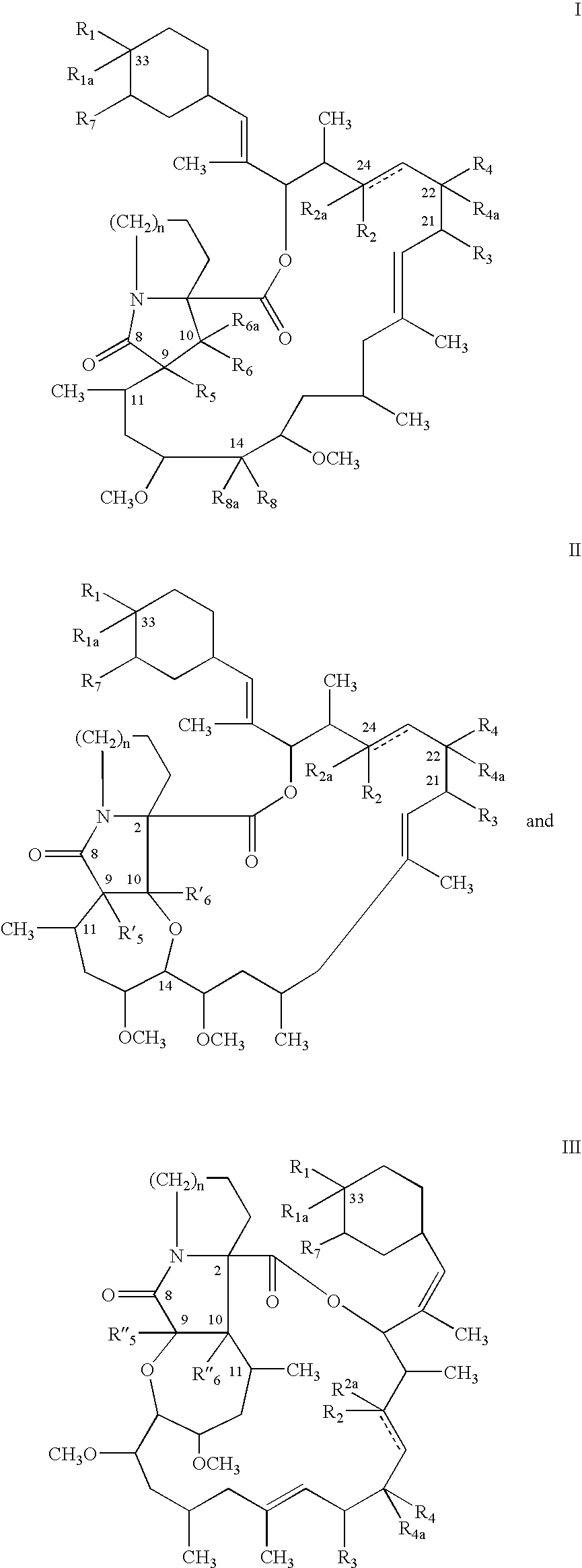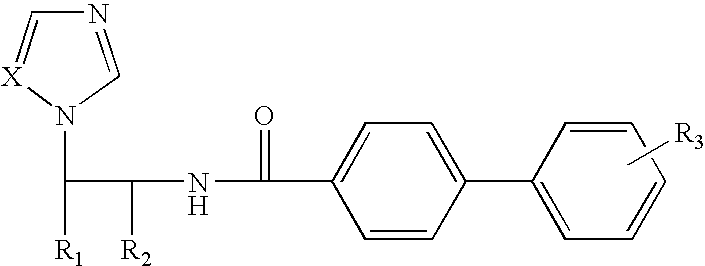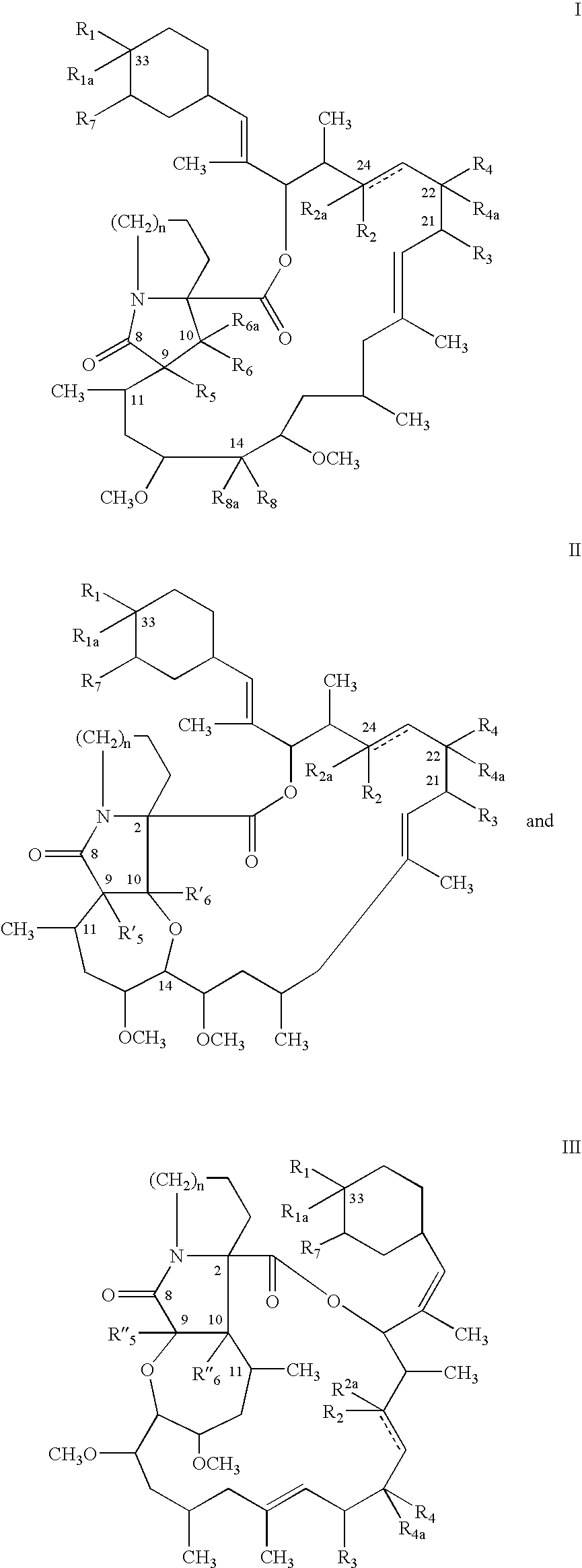Use of compositions to enhance innate immune response
a composition and immune system technology, applied in the direction of drug compositions, peptide/protein ingredients, immunological disorders, etc., can solve the problems of unlikely to induce antibiotic resistance, and achieve the effect of enhancing the immune system response, not provoking allergic reactions, and provoking antibiotic resistan
- Summary
- Abstract
- Description
- Claims
- Application Information
AI Technical Summary
Benefits of technology
Problems solved by technology
Method used
Image
Examples
example 1
[0135]To assess the effect of pimecrolimus on the innate immune response of the epidermis against bacteria, cultures of normal human keratinocytes (NHEK) are stimulated with a concentration of 10 nM pimecrolimus, 1 nM 1.25D3 (active 1.25 D-hydroxy calciferol) or their combination. Cells are lysed via sonication 20 minutes in an ice bath, after which cell lysates were mixed with Staphylococcus aureus ΔmprF cultures and incubated at 37° C. Bacterial growth over time is monitored by OD600 (Table 1). To determine if Pimecrolimus alone was able to kill Staphylococcus aureus ΔmprF, Pimecrolimus in a concentration of 10 nM is co-incubated with Staphylococcus aureus ΔmprF cultures and incubated at 37° C. (Table 2). Bacterial growth is monitored by OD600 (*: p<0.05; **: p<0.01; Student's t-test). Results are detailed in the tables below.
TABLE 1S. aureus andS. aureusKeratinocyte Lysates (S + K)TimeMeanSDNMeanSDN0 h0.2580000.00300030.2250000.0141067432 h0.27066670.0045092530.25766670.002081666...
example 2
[0138]To assess the effect of pimecrolimus on the innate immune response of the epidermis, cultures of normal human keratinocytes (NHEK) are stimulated with combinations of a concentration of 10 nM pimecrolimus, 1 μg / ml TLR 2 / CD14 ligand—peptidoglycan (PGN), 10 μg / ml lipoteichoic acid (LTA), 2 0.1 μg / ml TLR 2 / 6 ligand—Malp-, and / or 0.1 μg / ml TLR 4 / CD14 ligand—lipopolysaccharide (LPS). Expression of cathelicidin mRNA (Table 3) and protein as well as Human Beta Defensin (HBD) 2 (Table 4) and HBD3 (Table 5) expression in normal human keratinocytes is measured. Results are detailed in the tables below.
TABLE 3(Cathelicidin)withoutPimecrolimuswith PimecrolimusTreatmentMeanSDNMeanSDNcontrol0.950.1032.640.333PGN1.180.0539.810.693LTA3.821.48318.560.613Malp-22.290.46326.082.863LPS0.650.1038.670.523
TABLE 4(HBD2)without Pimecrolimuswith PimecrolimusTreatmentMeanSDNMeanSDNcontrol1.040.3536.531.9403PGN3.260.2930.514.4303LTA4.431.1031.770.5303Malp-2119.1628.753867.92114.5803LPS5.680.6131.340.7103
T...
example 3
[0140]To assess the effect of pimecrolimus on the innate immune response of the epidermis, cultures of normal human keratinocytes (NHEK) are stimulated with a combination of a concentration of 10 nM pimecrolimus and of 1 nM 1.25D3. Gene expression of TLR1, TLR2, TLR4, TLR6 and CD14 are evaluated by qPCR. For CD14 protein expression, a Western Blot is performed and bands are quantified by densitometry using lmagej. Vehicle treated keratinocytes serve as controls. Cathelicidin protein expression is evaluated by immunofluorescence staining. Results of mRNA expression are shown in tables below.
TABLE 6GeneMeanSDNMeanSDNcontrol1.25DTLR11.010.06031.930.183TLR21.140.66030.660.143TLR4n.d.n.dTLR61.240.44031.010.683CD141.030.22033.010.613Pimecrolimus1.25D + PimecrolimusTLR13.161.1132.370.523TLR21.800.0133.941.213TLR4n.d.n.d.TLR64.401.6332.571.083CD142.070.22362.0614.373n.d. = not detectable
PUM
| Property | Measurement | Unit |
|---|---|---|
| Immunogenicity | aaaaa | aaaaa |
Abstract
Description
Claims
Application Information
 Login to View More
Login to View More - R&D
- Intellectual Property
- Life Sciences
- Materials
- Tech Scout
- Unparalleled Data Quality
- Higher Quality Content
- 60% Fewer Hallucinations
Browse by: Latest US Patents, China's latest patents, Technical Efficacy Thesaurus, Application Domain, Technology Topic, Popular Technical Reports.
© 2025 PatSnap. All rights reserved.Legal|Privacy policy|Modern Slavery Act Transparency Statement|Sitemap|About US| Contact US: help@patsnap.com



